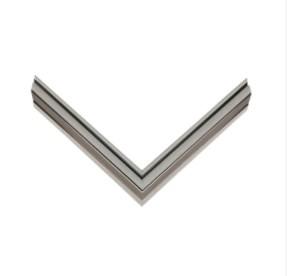Polystyrene (PS) mouldings are a type of plastic extrusion product that is known for their versatility and cost-effectiveness. They are commonly used in a wide range of applications, from construction and packaging to decorative elements and insulation. The durability of PS mouldings is a critical factor in determining their suitability for various applications. This article aims to explore the factors that contribute to the durability of PS mouldings and how they perform in different environments.
The durability of PS mouldings can be assessed based on several criteria, including resistance to physical damage, environmental factors, and the potential for degradation over time. One of the primary advantages of PS mouldings is their rigidity and strength-to-weight ratio. Polystyrene is a thermoplastic material that, when extruded and shaped into mouldings, can provide significant structural integrity with minimal weight.
In terms of resistance to physical damage, PS mouldings are relatively robust. They can withstand impacts without shattering, which makes them ideal for applications where there is a risk of accidental collisions or drops. However, they are not as strong as some other materials, such as metals or high-density plastics, and can scratch or dent if subjected to sharp or heavy forces.
Environmental factors also play a significant role in the durability of PS mouldings. Polystyrene is sensitive to UV light, which can cause the material to become brittle and discoloured over time. To enhance the durability of PS mouldings for outdoor applications, manufacturers often incorporate UV stabilizers into the material. These additives work to absorb the UV radiation and prevent the harmful effects on the PS mouldings, thereby extending their lifespan.
Temperature fluctuations can also affect the durability of PS mouldings. While polystyrene has a relatively low melting point, it can perform well in a variety of temperatures, provided it is not exposed to extremes. For applications where temperature extremes are expected, it is important to select a grade of polystyrene that is formulated to withstand those conditions.
Another factor to consider is the potential for chemical degradation. PS mouldings are generally resistant to water, making them suitable for use in moist environments. However, they can be susceptible to solvents and certain chemicals, which can cause the material to soften or dissolve. When using PS mouldings in environments where they may come into contact with chemicals, it is crucial to ensure that the mouldings are compatible with those substances.
The manufacturing process of PS mouldings can also influence their durability. High-quality control standards during production ensure that the mouldings are free from defects that could compromise their structural integrity. Additionally, the use of advanced extrusion techniques can result in a more uniform and dense material, which can enhance the durability of the final product.
In terms of longevity, PS mouldings are often considered a semi-permanent material. While they are not designed to last indefinitely, with proper care and under suitable conditions, they can maintain their appearance and functionality for many years. Regular maintenance, such as cleaning and the application of protective coatings when necessary, can further extend the life of PS mouldings.
In conclusion, the durability of PS mouldings is a multifaceted attribute that depends on the material's inherent properties, the environmental conditions to which they are exposed, and the quality of their manufacture. By understanding these factors and taking appropriate measures to protect and maintain PS mouldings, users can enjoy the benefits of this versatile material for an extended period. Whether used for construction, packaging, or decorative purposes, PS mouldings offer a durable and cost-effective solution for a wide array of applications.
